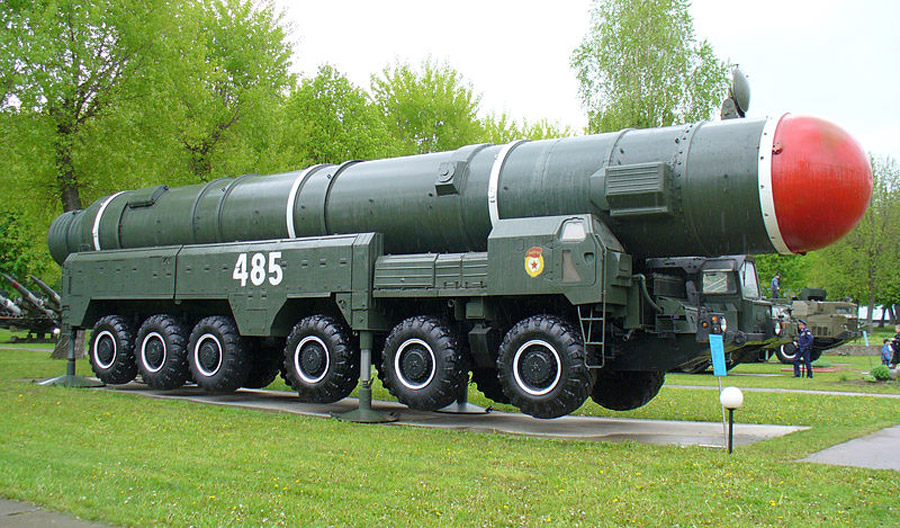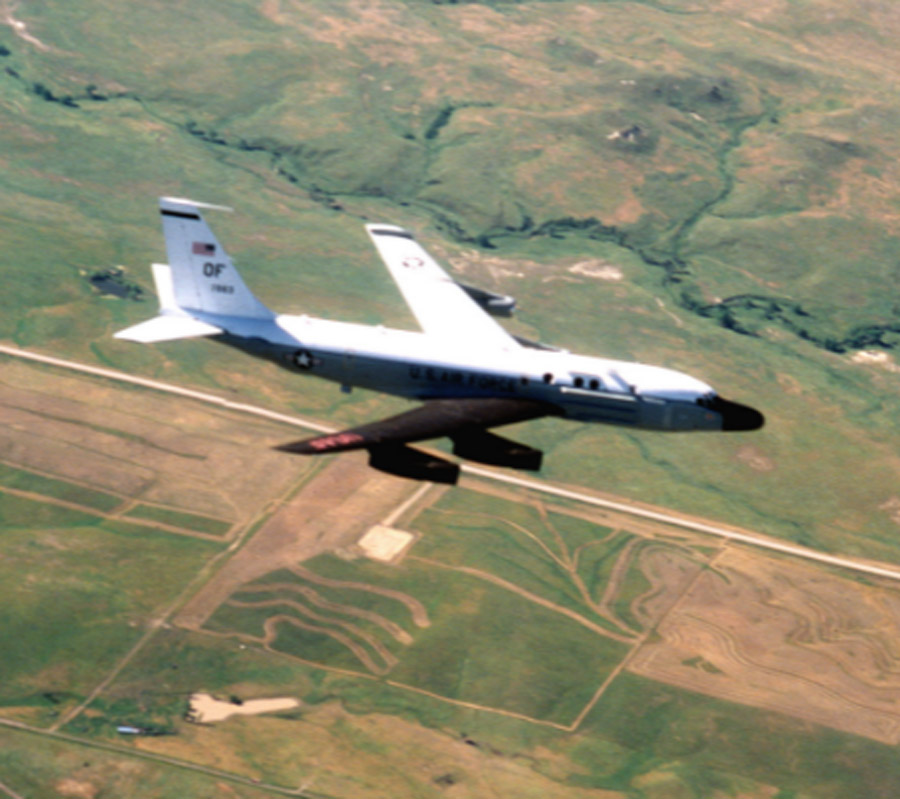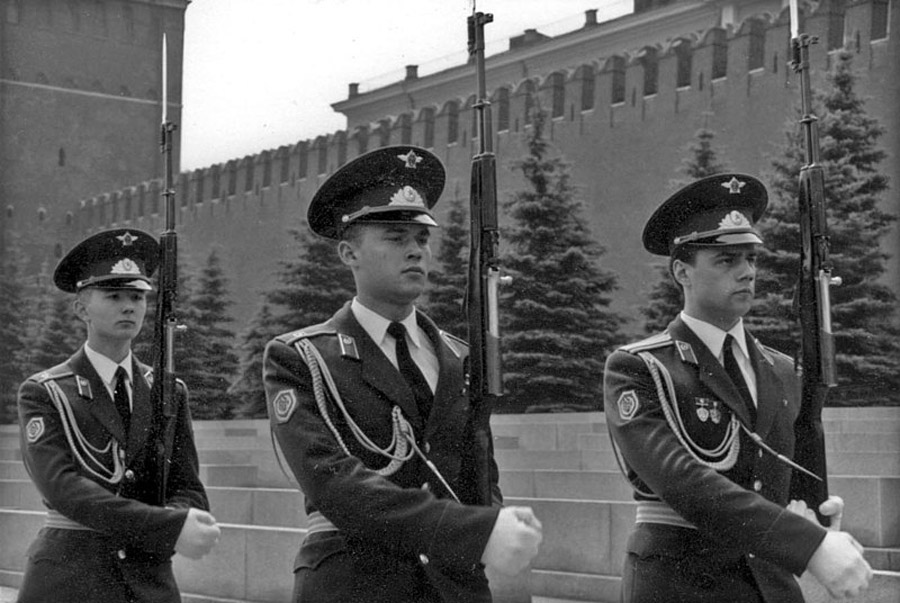In the year 1988, Robert Hopkins, a veteran US Air Force pilot, was deployed in an intelligence-gathering operation that involved the RC-135S Cobra Ball intelligence aircraft. Cobra Ball was an important intelligence-gathering asset for America due to the quality of data it could retrieve.
While on a mission to monitor the tests of a Russian intermediate-range ballistic missile, Hopkins, along with his co-pilot, witnessed something unexplainable. The phenomenon later came to be known as the “dome of light”.
What did Hopkins see out there in the sky? Was it a weapon? Some unknown form of defensive shield? Was it even Soviet technology, or something else?
The Sighting of Robert Hopkins
According to his account, in October or November of 1988, Hopkins and his crew were flying in a monitoring position east of the Kamchatka Peninsula. This location, in the far east of Russia, was extremely remote and had in the past been used for the testing of new Soviet weapons systems.
The aircrew received word that the Soviets were going to launch one of their intermediate-range SS-20 “Saber” missiles. Hopkins, along with his crew members, prepared all the essential instruments in order to record the launch.
However, during the preparations something entirely unexpected happened. While they were scanning the area for activity, Hopkins described something like a milky-white, translucent wall moving across the sky.

The wall was opaque and covered the whole sky from ground level as high as could be seen from the windows of the aircraft. It moved slowly eastwards, towards the northern Pacific and the position of the monitoring US airplane.
- Mysterious Russian Radio Station Called UVB 76
- What or Who Were The Foo Fighters? Strange WWII Lights In The Sky
From what the crew could see of the ground in front of the phenomenon, it moved much faster than their top speed and was approaching them rapidly. It seemed like it was going to engulf them, and there was nothing the panicked aircrew could do.
But the light passed through the path of the US flight and continued moving towards the east, leaving the plane completely undamaged. The sky behind it was dark and empty, with no residual evidence of what had just happened.
However, the crew had no time to investigate further. They were still out of position to observe the Soviet missile test, and so they turned to the left and away from the retreating wall of light. When they levelled on their southbound course, the wall of light could no longer be seen to the east.
A New Soviet Missile?
Hopkins stated that the “dome of light” originated from the launch location of the SS-20 Saber missile, radiating rapidly outwards from that point. Both Robert Hopkins and his co-pilot had witnessed the mysterious wall of light, and they were sure that it was not any kind of hallucination.
If it was a Soviet system, it was like nothing they had ever seen before. But there was a further problem: if it was not a Soviet system then it was even more mysterious, something that had never been seen in human history. All they could say was that it was a type of auroral event that they had never witnessed before.
But they were busy men. They reported the event but dismissed it in their own minds, and at that point the phenomenon might have been filed away and forgotten. However, the same crew witnessed the unusual event a second time, while they were on another tracking mission of the SS-20 Saber missile.
Prompted by this coincidence, many researchers have concluded that there is a link between the “dome of light” and the SS-20. However, scientists, engineers, as well as analysts have failed to explain how exactly the two events are related.

Evaluation of the phenomenon revealed that the “dome of light” could spread at a speed of nearly ten thousand kilometers per hour (6,200 miles per hour). But the researchers of the Foreign Technology Division (FTD) of the US Air Force in Ohio were not able to find any explanation as to the purpose or origin of the “dome of light”.
How, What and Why?
In the absence of a concrete conclusion, there have been a number of different theories as to what the “dome of light” could be. According to one of the theories, the unusual light show could be a result of a particular fuel that was used in the initial stages of the missiles, although this seems unlikely given the size of the observed phenomenon.
- Project Azorian: Did Howard Hughes Try to Steal a Russian Sub?
- The Philadelphia Experiment – What’s the Real Story?
Another significant theory relating to the “dome of light” is known as the ion cloud theory. According to the theory, the venting of unused rocket fuel resulted in the release of ion clouds.
These ion clouds could then be used as a measuring tool for upper atmosphere experiments. The observations of the dispersion rates would allow Soviet scientists to make calculations of the physical properties of the upper atmosphere like temperature, density, and particle flow rates. Additionally, the ion clouds could simulate a post-nuclear-war atmosphere, allowing the Soviets to test their communications under such conditions.
Such experiments were known, but in reality they differed a lot in appearance from the observations of the “dome of light”. The domes of light did not seem to contain any charged particles. In addition to this, the domes were much larger and visible for a longer period of time comparing to typical ionization experiments.
One of the most accepted and compelling theories relating to the “dome of light” is that it was a type of countermeasure employed by Russia against the anti-ballistic missile capabilities of the US. This is considered as one of the plausible explanations given the known Soviet military activity around the test site.

The “dome of light” may therefore have been intentionally designed in order to blind or confuse those who were watching for Soviet missile launches. It would make it difficult to spot as well as track incoming re-entry vehicles. This would mean that it is a Soviet military technology associated with an attack on the US and Europe, one which remains unknown to the West to this day.
This last possibility would be the most concerning for global stability. The “dome of light”, if indeed designed to counter US defenses, would provide the Soviets with an edge in the nuclear arms race. It would be a massively destabilizing move.
And all this, of course, assumes that the Soviets had anything to do with the phenomenon at all. Could it be a rare atmospheric event, completely unrelated to the test? Could there be another, unknown presence over the Pacific watching the Soviet launch? Could the pilots be mistaken?
The answers are still out there. If the Soviets were developing something, it remains a secret to this day.
Top Image: Was it a new Soviet technology, or something else? Source: Alexyz3d / Adobe Stock.
By Bipin Dimri